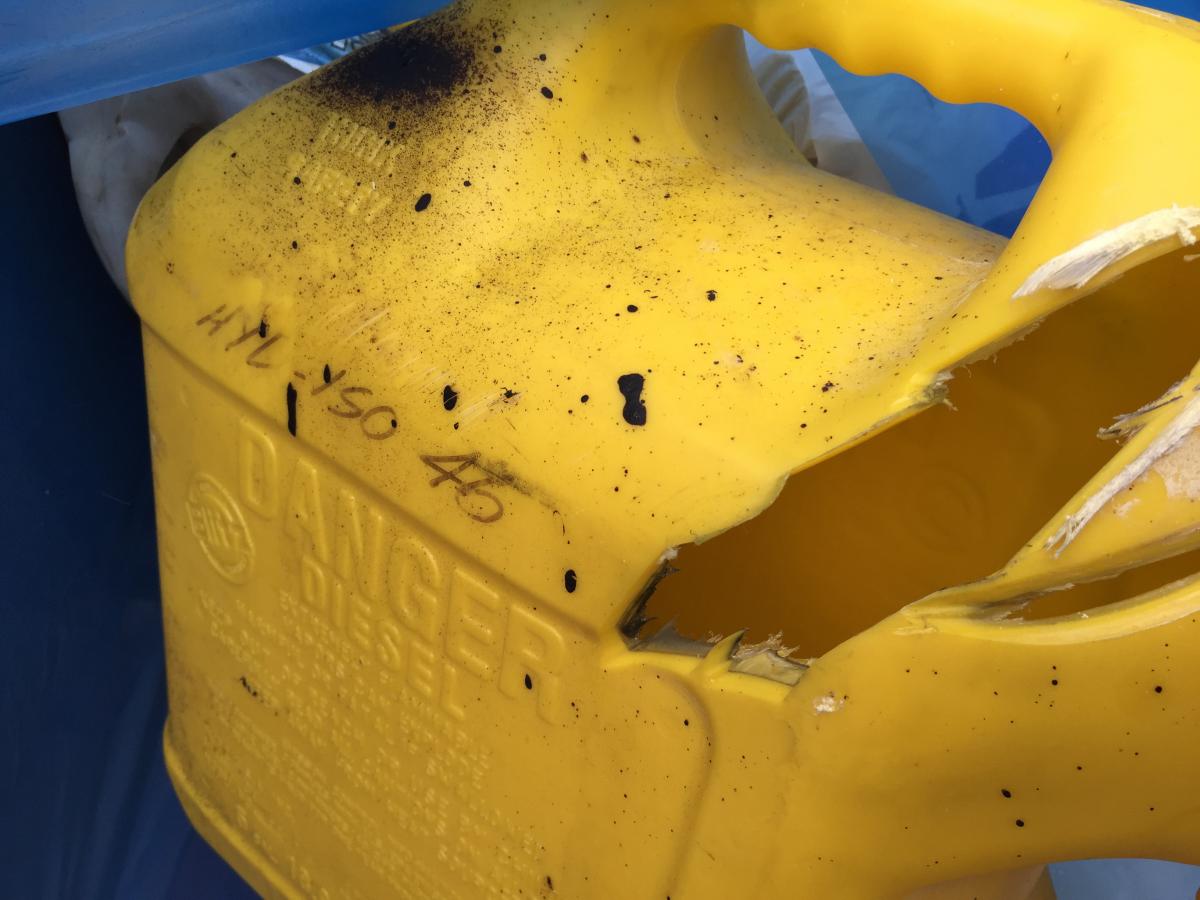RT Firefly
Enigma
Greetings,
Mr. WK. One would hope so.

Mr. WK. One would hope so.


One of the reasons we don't have carpets is acess to the engine, fuel selectors ect. Plus if I hear or otherwise sense something wrong I want to see below NOW.
Good point. We do have carpet on the saloon floor. I have 6 access hatches to the ER. 1 is direction over the genset so isn't that useful. One is on the forward end of the engine and is easy to get to and open. However, the others are covered by a rug that I think is a pain to move. This has been a point of contention between my wife and I.
It is quick and easy for me to check the filters and change the tanks, easy to see the front of the engine, where the oil filter, fuel filter, water pump, and sea-strainer are located. The exhaust, air filter, and dripless shaft seal, not so much.

And maybe, just maybe, if he'd stayed at the helm, keeping a close eye on his oil pressure and temp gauges, instead of being bum up down below in the ER so much, and lulled into a false sense of security by all the engine checks, he might have picked the leak up soon enough to save the engine from seizing..?

Would you be of the same opinion if you were the owner of a Nordhavn 50 or 60 cruising from Brisbane to the Seychelles?
That smacks of total inexperience with major engine issues. .............
There's not much you can do about "major engine issues" by just looking.
And as somebody mentioned earlier in this thread, you could look everything over and have a hose blow the minute you closed the hatch or door.
Obviously, everyone has their own comfort levels but I believe routine maintenance means that your engine is likely to make it from one anchorage or marina to the next.
We have gauges, we have warning lights and we have our hearing and feel for the boat. For me, that's enough. For someone else, that's their choice. It seems some folks would operate from the engine room if they could.


Now now Peter, online psychoanalysis has its dangers, the water is deep.Wes...I have a sneaky feeling, maybe...just maybe...some folk get a sort of endorphin rush, fueled by the paranoia generated fear, just sayin'..?

I must admit that I, too, subscribe to Peter's faith in the gauges, After all, if they don't alert you to potential problems, why did the builder put them in the boat in the first place? In my flying days I developed a routine scan of the panel almost every minute as I certainly couldn't check the engine visually. My boat doesn't lend itself to hourly ER visual checks so i really rely on gauges and ER cameras most of the time.Because it's the gauges which warn of impending disaster that really matters, not a few minor oil drips under the engine, or a bit of water in the bilge.

Here's a reason to do ER checks regularly in hazardous conditions. This can that contained hydraulic fluid was improperly stowed in the ER and came loose in very heavy weather in Chatham Sound. It became lodged next to the engine where a belt was busy sawing it in half. Fortunately we found it before it caused mayhem in 18' seas.
Richard

Yes - I said improperly stowed by definition - since it came loose. I now have almost nothing stored in the ER - all stored in the lazarette. The truth is that sometimes things we think are properly stowed, are in fact not. This was the second day of my delivery and I'll admit to being less aware of all of the possible issues in an engine room. My point is that, however well prepared we think we are, there is always something that can happen. ER checks won't catch everything but they are one of many ways to reduce risk. Just in the same way, as you point out, making sure the ER is in proper condition prior to a trip. Trust but verify! The layering of different safety approaches is what ultimately helps reduce risk.Richard
Obviously a good catch, and I won't knock doing frequent ER checks although I personally don't do them on all trips.
But the two things that jumped out at me in your post were: 1. improperly stowed item in ER and 2. clearly no belt guards, or inadequate belt guards in place.
There was a boat, Great Harbour I think, that sank primarily because a battery was not properly secured and damaged a stuffing box. Sure an ER check might well have saved it. But so would securing the battery, and that's the better approach.
My take on all this ER routine is to get the ER in proper condition prior to a trip! I inspect before and just after startup and again just before and after shutdown. If doing a long run and its convenient, I take a peek into the ER. ie when in safe/easy navigation situation as I'm usually running solo. I do have 3 cameras in my ER, but not sure that they are ideally located and temp/smell is best checked in person. My boat is 35 yo but everything in the ER is under 4 yo. That also helps with comfort factor.
I must admit that I, too, subscribe to Peter's faith in the gauges, After all, if they don't alert you to potential problems, why did the builder put them in the boat in the first place? In my flying days I developed a routine scan of the panel almost every minute as I certainly couldn't check the engine visually. My boat doesn't lend itself to hourly ER visual checks so i really rely on gauges and ER cameras most of the time.
Here's a reason to do ER checks regularly in hazardous conditions. This can that contained hydraulic fluid was improperly stowed in the ER and came loose in very heavy weather in Chatham Sound. It became lodged next to the engine where a belt was busy sawing it in half. Fortunately we found it before it caused mayhem in 18' seas.
Richard

The 18' seas caused the container to come loose. Yes - I was in the ER in 18' seas. The experience was surprisingly benign. Being at the waterline and about 1/3 of the way forward reduces the motion considerably. I had no problems with being down there. Obviously at one point the motion was enough to move the container, which the PO had left in a location that I now realize was not a good spot. My previous boat was a 36' sailboat. There was no "engine room" as such, and the concept of having anything other than an engine in there was foreign to me! Now I know better.Richard... I'm just a bit confused [nothing new about that - lol].
Did the hydraulic fluid container come loose and get in contact with fan belt before you hit 18' seas... or... did the 18' seas tossing of boat break it loose? And, were you in 18' seas while checking engine room and finding the lose container? If so, how much fun is it to accomplish an engine room visit in 18' seas?
Fortunately I have never been seasick (looks for knock-on-wood-emoji)
Richard
 Nor has it my wife's!!
Nor has it my wife's!! Poor gal and... I feel for my son, cause he loves the water.
Poor gal and... I feel for my son, cause he loves the water.When we get to the skipper operating his boat from the ER we'll need to back up and talk about plan B. What happens if ...... then the alive and well paranoia will have us pulling a barge w Fisheries Supply on it.
